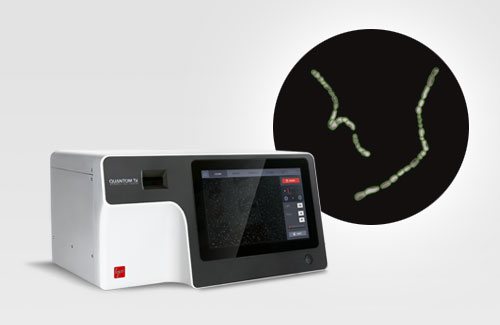Bacteria counting plays a pivotal role in numerous scientific, medical, and industrial fields due to the significant impact bacteria have on our environment, health, and economy. For example, counting bacteria is crucial for understanding the progression of infections and the effectiveness of antibiotics. In the food industry, bacteria counting ensures the safety and quality of products. Monitoring bacterial levels helps in detecting and preventing foodborne illnesses caused by pathogens like Salmonella, E. coli, and Listeria. In the biotechnology industry, bacteria counting is fundamental for the development of products like antibiotics, vaccines, and enzymes. It is also critical in fermentation processes used in making products like yogurt, cheese, and biofuels. Accurate bacteria counting ensures the consistency, efficiency, and safety of these processes and products.
In this blog, four techniques for bacteria counting will be discussed: Optical Density (OD) 600 measurement, CFU colony counting method, single cell counting with the hemocytometer, and the automated single cell counting with the QUANTOM Tx™. Each approach offers a unique perspective on bacterial populations, catering to different research needs and accuracy levels.
Understanding OD 600: This method involves measuring the turbidity of a bacterial culture at a 600 nm wavelength. It’s a fast, non-destructive way to estimate bacterial concentration, where the turbidity correlates with the number of cells.
Benefits and Limitations: OD 600 is valued for its speed and simplicity but falls short in distinguishing between live and dead cells and is less effective at low concentrations.
CFU Explained: Colony Forming Unit (CFU) counting is a traditional microbiological method that measures the number of live and culturable bacterial cells. It involves spreading a diluted bacterial sample on an agar plate and allowing colonies to grow.
Counting Colonies: After incubation, visible colonies are counted. Each colony represents a single or group of bacteria that have multiplied into visible masses.
Why CFU Counting Matters: CFU counting is vital for assessing the viability of bacterial cells, as only live cells can form colonies. This method is particularly useful in assessing bacterial growth, antibiotic effectiveness, and in quality control processes.
The Traditional Tool: A hemocytometer is a specialized microscope slide with a grid, used for manually counting cells. To count bacterial cells, a hemocytometer with a 20-micron chamber depth is used to collect small bacterial cells into the same focal plane.
Counting Technique: A diluted sample is placed on the grid, and cells within the squares are counted under a microscope. The concentration in the original sample is calculated using counted cell number and dilution factor.
Advantages: This method excels in accuracy, especially for specific cell types or heterogeneous samples. When used with dyes like SYTO 9 and Propidium Iodide (PI), live/dead cell counting can be achieved.
Disadvantages: However, the use of a hemocytometer for counting bacteria, despite its precision, has some notable drawbacks. The method can be time-consuming and subjective varying with the user’s skill and interpretation.
Innovative Approach: QUANTOM Tx™ is an automated bacteria counting device that counts individual bacterial cells using fluorescent tagging.
Functionality: It labels bacteria with fluorescent dye, captures images, and counts the fluorescently-labeled cells. To prevent a Brownian motion during cell counting, labeled bacterial cells are concentrated on a single focal plane and then counted with the automated instrument that has fluorescence microscopy optics.
Advantages: One of the most significant advantages of automated counters is their ability to process samples much faster than manual counting methods. This speed is crucial in high-throughput settings like clinical labs, research institutions, and industrial applications where large numbers of samples need to be analyzed within a limited time. Also, automated systems minimize the variability introduced by human error and subjective judgment. Since the counting is done by a machine, the results are consistent regardless of the operator. This feature ensures reproducible and objective results, which are essential for accurate research and analysis.
From rapid assessments to in-depth analyses, different bacteria counting methods collectively form the backbone of bacterial quantification in various fields. Whether it’s for medical research, food safety, environmental monitoring, or biotechnological innovation, mastering these techniques opens up a world of possibilities in understanding and harnessing the power of these microscopic entities.









